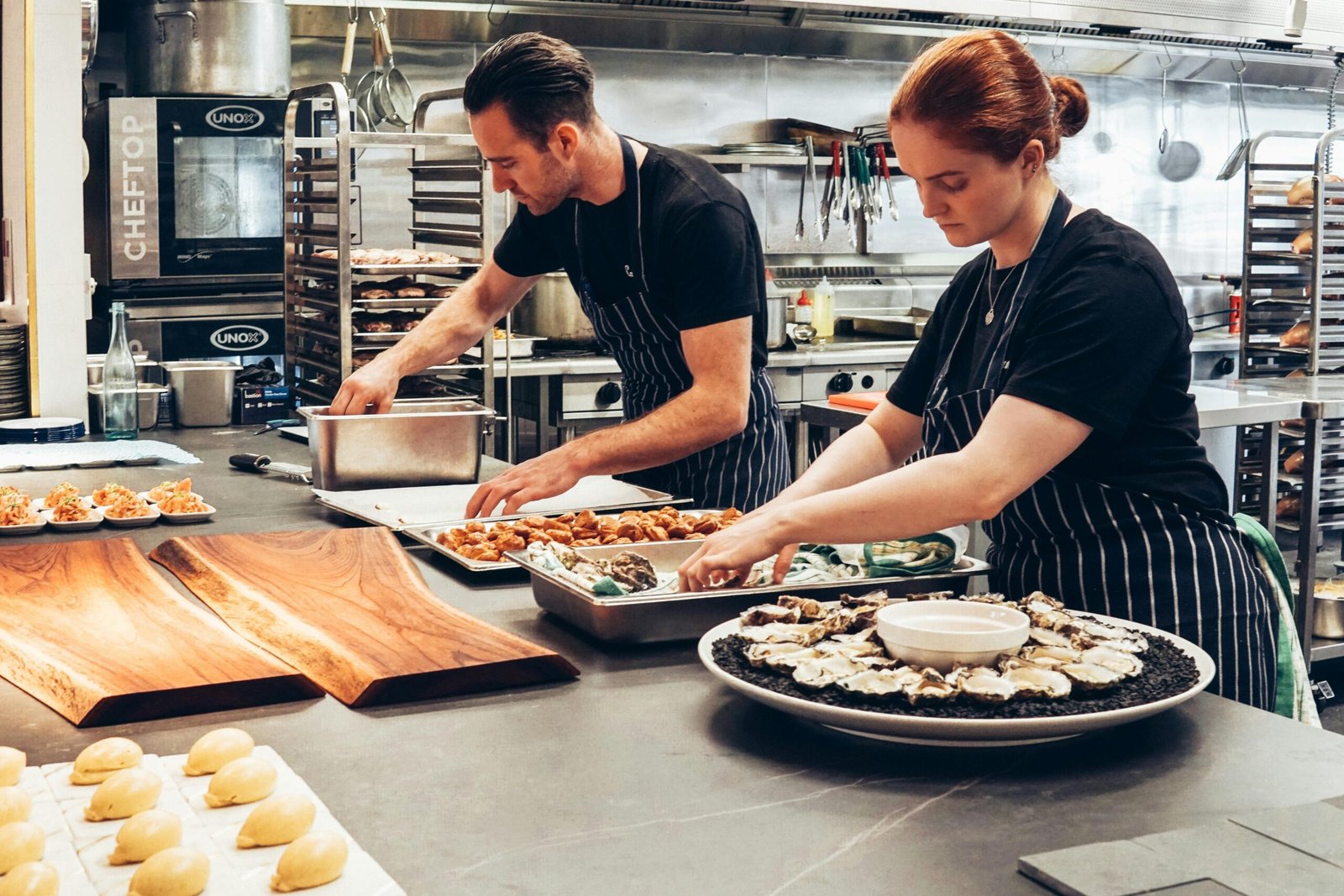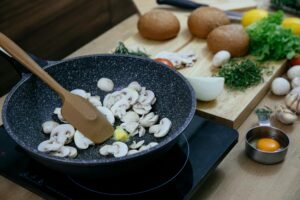How to Cook Legumes for a Nutritious Meal
Legumes are a powerhouse of nutrition, offering a wealth of health benefits. They are rich in protein, fiber, vitamins, and minerals, making them an excellent addition to any diet. To fully enjoy these benefits, it’s essential to cook legumes properly. In this guide, we will delve into the best methods to cook various types of legumes, ensuring a nutritious and delicious meal every time.
Understanding Different Types of Legumes
Before we dive into cooking techniques, let’s explore the different types of legumes. Legumes include beans, lentils, peas, and chickpeas. Each type has unique characteristics and nutritional profiles:
- Beans: Varieties include black beans, kidney beans, pinto beans, and navy beans. They are high in protein, fiber, and various micronutrients.
- Lentils: Available in colors like brown, green, red, and black. Lentils are quick-cooking and packed with protein and iron.
- Peas: Green peas, split peas, and snow peas fall under this category. They are a good source of vitamins A, B, and C.
- Chickpeas: Also known as garbanzo beans, chickpeas are versatile and rich in protein, fiber, and folate.
Preparing Legumes for Cooking
Sorting and Rinsing
Start by sorting through the legumes to remove any debris or damaged beans. Rinse them thoroughly under cold water to eliminate any dirt or dust. This step is crucial to ensure the legumes are clean and safe to eat.
Soaking
Soaking legumes before cooking can significantly reduce cooking time and improve digestibility. Here’s how to soak different types of legumes:
- Beans and Chickpeas: Soak them in water for at least 8 hours or overnight. Use three cups of water for every cup of legumes. Drain and rinse before cooking.
- Lentils and Split Peas: These legumes do not require soaking but rinsing them before cooking is recommended.
Quick Soak Method
If you are short on time, the quick soak method can be a lifesaver. Place the legumes in a large pot, add water, and bring to a boil. Boil for 2 minutes, then remove from heat, cover, and let sit for an hour. Drain and rinse before cooking.
Cooking Methods for Legumes
Stovetop Cooking
Cooking legumes on the stovetop is a traditional method that allows for precise control over texture and flavor.
Basic Stovetop Cooking Steps
- Add Water: Place soaked legumes in a pot and add fresh water. Use three cups of water for every cup of legumes.
- Boil and Simmer: Bring to a boil, then reduce to a simmer. Skim off any foam that forms on the surface.
- Cooking Time:
- Beans: 1-2 hours.
- Lentils: 20-45 minutes, depending on the type.
- Chickpeas: 1-2 hours.
- Split Peas: 30-60 minutes.
Using a Pressure Cooker
A pressure cooker can drastically reduce cooking time, making it a convenient option for busy individuals.
Steps for Pressure Cooking
- Prepare Legumes: Rinse and soak (if necessary) the legumes.
- Add to Pressure Cooker: Place the legumes in the pressure cooker with water. Use two cups of water for every cup of legumes.
- Cook: Follow the pressure cooker’s instructions for specific cooking times:
- Beans and Chickpeas: 25-30 minutes.
- Lentils and Split Peas: 10-15 minutes.
Slow Cooker Method
Using a slow cooker is an excellent way to have legumes ready with minimal effort.
Steps for Slow Cooking
- Prepare Legumes: Rinse and soak (if necessary) the legumes.
- Add Ingredients: Place the legumes in the slow cooker with water and any desired seasonings. Use three cups of water for every cup of legumes.
- Cook on Low: Cook on low for 6-8 hours or on high for 3-4 hours.
Enhancing Flavor and Nutrition
Seasoning
Adding herbs and spices can elevate the flavor of your legumes. Consider adding bay leaves, garlic, onions, cumin, coriander, and thyme during cooking. For a richer taste, sauté onions and garlic before adding them to the pot.
Nutritional Boosters
Incorporate vegetables like carrots, celery, and tomatoes to enhance the nutritional profile. Leafy greens such as spinach and kale can be added towards the end of cooking for an extra boost of vitamins.
Combining Legumes
Mixing different types of legumes can create a more complex and satisfying dish. For example, a combination of lentils and beans can provide a diverse range of textures and flavors.
Popular Legume Recipes
Classic Hummus
Hummus, made from chickpeas, is a delicious and nutritious dip.
Ingredients:
- 2 cups cooked chickpeas
- 1/4 cup tahini
- 1/4 cup olive oil
- 2 cloves garlic
- Juice of 1 lemon
- Salt to taste
Instructions:
- Combine chickpeas, tahini, olive oil, garlic, and lemon juice in a food processor.
- Blend until smooth, adding water if needed to reach desired consistency.
- Season with salt and serve with pita bread or vegetables.
Lentil Soup
Lentil soup is a hearty and nutritious meal, perfect for any season.
Ingredients:
- 1 cup lentils
- 1 onion, chopped
- 2 carrots, diced
- 2 celery stalks, diced
- 4 cups vegetable broth
- 2 cloves garlic, minced
- 1 tsp cumin
- 1 tsp coriander
- Salt and pepper to taste
Instructions:
- Sauté onion, carrots, celery, and garlic in a pot until tender.
- Add lentils, broth, cumin, and coriander.
- Bring to a boil, then simmer for 30-45 minutes until lentils are tender.
- Season with salt and pepper, and serve hot.
Black Bean Tacos
These black bean tacos are flavorful and packed with protein.

Ingredients:
- 2 cups cooked black beans
- 1 tsp cumin
- 1 tsp chili powder
- 1 onion, chopped
- 1 bell pepper, sliced
- 8 taco shells
- Toppings: avocado, salsa, cilantro, lime
Instructions:
- Sauté onion and bell pepper in a pan until tender.
- Add black beans, cumin, and chili powder. Cook for 5-10 minutes.
- Fill taco shells with the bean mixture and top with avocado, salsa, cilantro, and a squeeze of lime.
Storing and Reheating Legumes
Storing Cooked Legumes
Store cooked legumes in an airtight container in the refrigerator for up to 5 days. For longer storage, freeze them in portion-sized containers for up to 3 months.
Reheating
Reheat legumes in the microwave or on the stovetop. Add a splash of water or broth to prevent them from drying out during reheating.
Health Benefits of Legumes
Incorporating legumes into your diet can lead to numerous health benefits, including:
- Improved Digestion: The high fiber content in legumes promotes healthy digestion and regular bowel movements.
- Heart Health: Legumes are low in fat and high in fiber, which can help lower cholesterol levels and reduce the risk of heart disease.
- Blood Sugar Control: The complex carbohydrates and protein in legumes can help stabilize blood sugar levels, making them an excellent choice for people with diabetes.
- Weight Management: The protein and fiber in legumes help you feel full longer, aiding in weight management.
















